When we talk about hypercars, two independent brands stand head and shoulders above the rest; Pagani and Koenigsegg. Both are relative newcomers to the market place, yet both have established and proved themselves to be at the top of their game in their young histories. Having already driven the latest and greatest Pagani Huayra, we pounced on Koenigsegg’s invitation to take a look at the Koenigsegg Agera R.
Koenigsegg’s history extends all the way back to 1994 when Christian von Koenigsegg started his car company and started to pen the first Koenigsegg Supercar – The Koenigsegg CC. The Koenigsegg CC Concept first appeared at a BPR GT race at Anderstorp Racetrack in the summer of 1996, were famous Swedish Touring car racer Rickard Rydell showcased and drove the car in front of the audience. In 1997 the second CC prototype was showcased at the Cannes Film Festival giving Koenigsegg its first international debut. The first production car was ready in 2002. It was a red Koenigsegg CC8S which became Koenigsegg official testcar. Later on this car was converted from a CC8S into a CCR and took the top speed record from the Mclaren F1 in 2005. A great feat by a small new car company. If you compare this car to the Agera R today, you see design and mechanical refinement on a pedantic scale.
Christian von Koenigsegg can best be described as an innovator and this is what shines through most with the Koenigsegg Agera R. Instead of relying on purchased parts from larger bulk manufacturing companies, much of the Agera R is bespoke and built in-house at the Koenigsegg factory in Ängelholm, Sweden. Koenigsegg has even developed the Agera range with an unique in-house V8.
Christian is one of the first to point out that the hypercar market has changed dramatically since he first put pen to paper with the Koenigsegg CC-series. The evolutionary nature of the Koenigsegg design philosophy ensures that each generation of the design meets and surpasses the last generation Koenigsegg and of course the competition. The by-product of this is that the raw character of the original cars can still be traced through the fundamental DNA of the Agera R.
The Koenigsegg Agera R is undoubtedly a modern and efficient hypercar. Christian described the original CC8S as the perfect supercar. Christian doesn’t retract that statement either. The Agera R is billed as that original concept refined for a modern day hypercar customer.
The Koenigsegg Agera R retains the original Koenigsegg CC series looks. Yet it has grown larger in every dimension and became more muscular. The wheel arches wrap the wheels tight whilst a design line runs from the top of the front to the rear arch. The Agera gets side vents that allow heat to exit from behind the front fender. Air vents are also visible on top of the front and rear fenders. At the rear, the diffuser acts to channel air out of the back whilst even the exhaust is designed to carry out its function as efficiently as possible.
The 5.0 litre V8 fitted to the Koenigsegg Agera R weighs just 197kg with flywheel, clutch, dry sump system, exhaust, turbo and manifold system all attached. An incredibly low weight considering the ferocious output. It is a strong system. Despite running at 28 bar of pressure, reliability issues are almost unheard of, even in the highest mileage cars.
One of the secrets to obtain such high power output from a relatively small engine, is that Koenigsegg’s engineering department has designed a unique shape for the combustion chamber combined with a unique philosophy for the intake systems dynamics. These designs supresses detonation, also called knocking and at the same time allow for a higher average cumbustion pressure than otherwise possible. The super light but strong, ceramically coated and forged pistons only weigh 280 grams and feature the Koenigsegg logo laser engraved on top of the ceramic dome. These super light pistons are in turn mounted on Koenigseggs own titanium connection rods. The list of unique solutions goes on and on. Even the fuel pump system is designed for the application. Koenigsegg’s ability to factor in every facet of the Agera’s physical form means that the engine is perfectly balanced for the car it is fitted to.
In total, the Koenigsegg Agera R produces 960hp on 95 octane regular fuel and 1,140hp running on E85 bio fuel. Yet Koenigsegg will also be quick to point out that the engine passes worldwide emissions standards as well as maintaining a 16mpg fuel economy rating. Power is routed to the rear wheels through a 7-speed dual clutch gearbox. It combines a dry and wet clutch system for ultra quick shifts. It is lighter, faster and more reliable than similar gearboxes.
The Koenigsegg Agera R doesn’t skimp on electronic safety systems either. For example Koenigsegg fits dual airbags, an adjustable traction control module to the Agera R with 5 settings that adjust the electronic program from fully on to fully off. Since 2013 stability control is also standard. The Agera R also gets an electronic differential system which is actually an innovative blend of mechanical plates and ramps coupled with algorithms developed by Koenigsegg. This allows an instant and efficient reaction to changing traction conditions.
As you would expect from a car in this price bracket, the Koenigsegg Agera R has a full carbon fibre monocoque. Koenigsegg were the third company to incorporate this expensive tooling into their cars, following in the footsteps of the iconic McLaren F1. Fuel tanks are fully integrated and together, the monocoque weighs just 70kg. With a tank full of E85 bio fuel, we set out onto the road for our first experience with this Swedish monster!
The ride is supple and smooth. Koenigsegg makes use of a Triplex suspension system which adds a third shock absorber which links the individual systems fitted to each rear wheel. This has a number of advantages. Foremost, it allows the Agera R to efficiently combat the squat effect caused by the mixture of extreme power and extreme grip at launch. It also allows for an optimal suspension geometry setup.
The Triplex system was introduced for the 2013 model range which means that a number of Agera R’s were delivered without it. Those customers won’t feel short changed though. The standard Agera R setup is more than capable of delivering a refined ride whilst delivering the handling and ride charactistics one would expect from such a hypercar. The Triplex system just does it all that little bit better, evolving the basic functions for a more advanced generation.
When you first step in to the Koenigsegg Agera R it is hard to describe what you would expect. The Agera R is wide. Precisely 2 meters wide to be exact. This width was choosen in order to match maximum allowed width for LeMans cars. This means that the Agera R is slightly narrower than an Aventador or a Huayra, but still wider than the P1, LaFerrari and the 918.
Once inside, the cabin feels spacious, the curved windscreen offers a panoramic view to the outside world and you have the feeling your behind must almost touch the street. The Agera R also offers a surprisingly spacious seating position for tall people. Being 6”2 most supercars feel like a sweater that is two sizes to small. In the Agera R however there is plenty of leg and head room, even a helmet would have fitted without touching the roof. The seating positions are very close to the center of the car. The reason for this design is to obtain a smaller frontal area of the car, as the side screens can be moved inwards. it also helps to get the mass in the center of the car. This is why most LeMans prototypes have this layout. Sitting so centrally in the car means there is a wide door sill to negate getting in and out. This, of course, is an acceptable price to pay in order to obtain maximum performance.
Time to go, the Agera R has keyless-go, hit the start button and the engine comes to life behind the driver. Flick the right paddle to engage first gear and we are on our way! The flappy paddles are mounted directly behind the steering wheel and have a solid click to them. Accelerating out of the former air base we quickly shift through 2nd, 3rd and 4th gear. At higher speeds it feels like the gear changes happen before you can even hear the distinctive click-clack of the paddles.
The Swedish roads are far from smooth. Deep tracks, frequent holes and rough patches line the roads for mile after mile. Normally this takes all the fun away or at least makes the journey with the majority of supercars very uncomfortable, however with the Agera R none of that happens. The car takes bumps, potholes and tracks with surprising ease.
Despite the ability to kill tarmac under nearly any condition, the Agera R loves smooth tarmac the most. Under heavy acceleration the tires seem to eat into the road and the Agera R propels forward at a speed and with a sensation we have rarely experienced before. After an interesting drive through the Swedish country side we head over to the ‘Koenigsegg runway’ for some high speed driving without breaking any laws (except maybe some physics laws).
Out on the runway, we were able to test the Agera R’s performance to the maximum. As you probably know Koenigsegg set a Guiness World Record for fastest production car to accelerate from 0-300 km/h and brake back to zero in 21.19 seconds.. We couldn’t resist. We had to experience ourselves what it is like to do 0-300km/h then back to 0 again…
Afterall, it is the incredible performance that makes the Koenigsegg Agera R so legendary. After a few warm-up runs to get some heat into the tires it was time to replicate the Guiness Book of World Records run. We stop at the far end of the runway. Foot on the brake, breath in… 3, 2, 1 countdown inside the head and full throttle… 1st gear… 2nd gear… 120 km/h… 3rd gear… 4th gear… 220 km/h… 5th gear… 300 km/h!! Not even driven 2/3rd of the runway… Hard on the brakes, even under extreme braking you can take your hands of the steering wheel and the Agera R will still brake in a dead straight line. Just a few seconds later the Agera R comes to a full standstill.
A small adrenaline rush sinks away and the brain slowly starts to catch up with what just happened. It might not have been 21.19 seconds fast but it does simply take the breath away. The spec sheet certainly confirms that feeling. 0-100km/h in just 2.8 seconds with 200km/h clocked in just 7.8 seconds. The ultimate top speed remains untested, however, Koenigsegg’s super computers estimate that a top speed somewhere between 430 to 440 km/h is possible.
Whilst we can’t comment on whether calculated top speed is possible to achieve in real life, we can say that at 320km/h the Agera R was still accelerating wildly. It is clear that the Agera R has plenty in reserve to push the boundaries further. But that is not all. Koenigsegg stresses the Agera R is not all about sheer acceleration or top speed, it corners well too!
The aerodynamics of the Agera R have evolved to perfection. Early Koenigsegg’s were slippery in the aero department, designed for top speed with little by way of downforce at lower speeds. This was publically pointed out by the popular TV series Top Gear when the Stig drove a CCX into a tyre wall at high speed, before breaking the lap record with the same car. The Agera R comes with a well thought out set of aerodynamic enhancements.
The extreme downforce of the Agera R allows for some serious high speed cornering. We have never experienced a car that stays so flat and has so much grip while doing a slalom at 240 km/h. You can feel the G-forces pulling your internals around with every turn of the steering wheel. Even at this extreme, the Agera R seems to leave plenty in reserve. We never reach the point where the grip ends.
The rear spoiler provides much of the rear downforce. In order to reduce weight, the wing doesn’t use electrical systems to function. Instead, it remains fixed to chassis through a set of suspension springs. The movement of the air over the wing depicts its position. Whereas many aerodynamic systems adapt at a pre-determined speed, the Agera R allows for the air to actively determine the aerodynamic function and the wing height. It means that it has an optimal and consistent effect in different environments.
The feeling of quality is also taken to extreme lengths with the Agera R. Three materials are fundamental to the interior of each car; leather, aluminium and carbon fibre. The later adorns over 400 different unique parts of the car. You will be pleased to hear that there isn’t a single piece of plastic to see or feel. The centre console buttons are machined from ultra-thin aluminium fitted with LED illumination and a high definition touch screen infotainment system comes as standard.
Overall, we loved the Koenigsegg Agera R. The drama and sheer speed are unmatched, yet it feels every bit the quality product you’d expect at this price. The grip is phenomenal, the interior space surprised us and the look turns heads wherever you go. The excitement of the experience means that those who are lucky enough to own an Agera R will feel that every drive is a special occasion.


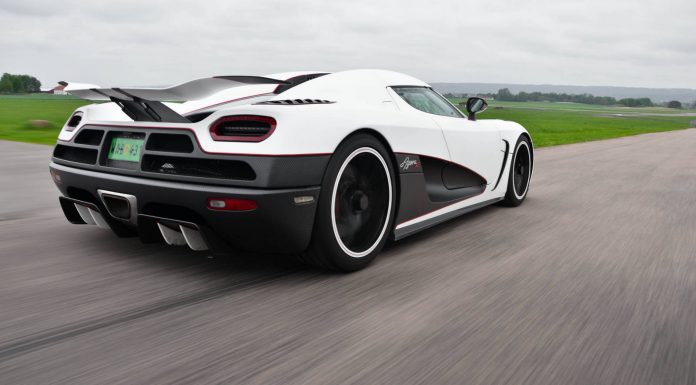
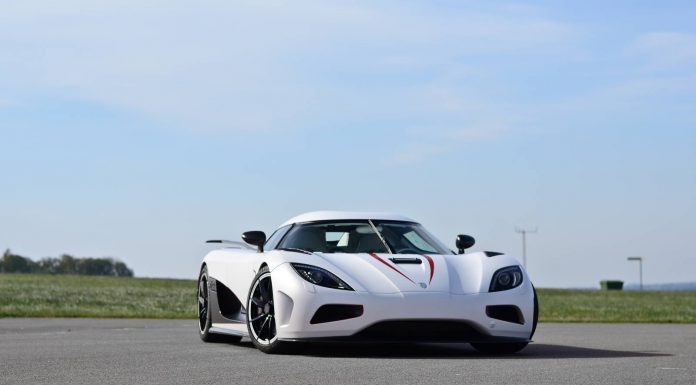
















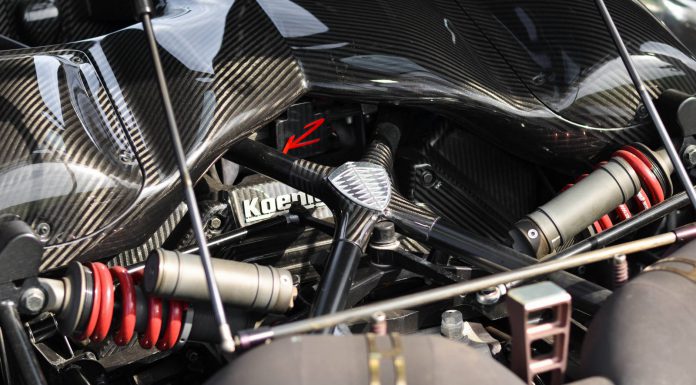
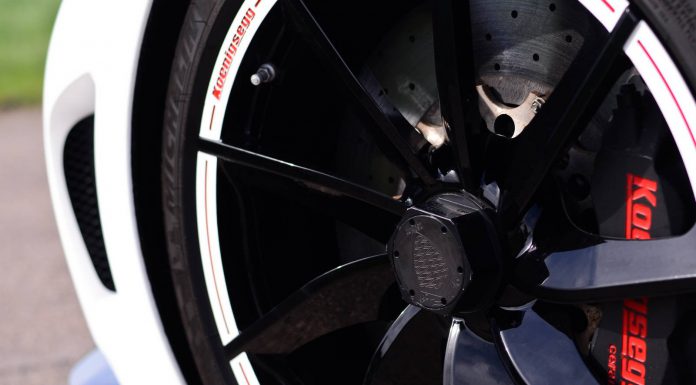
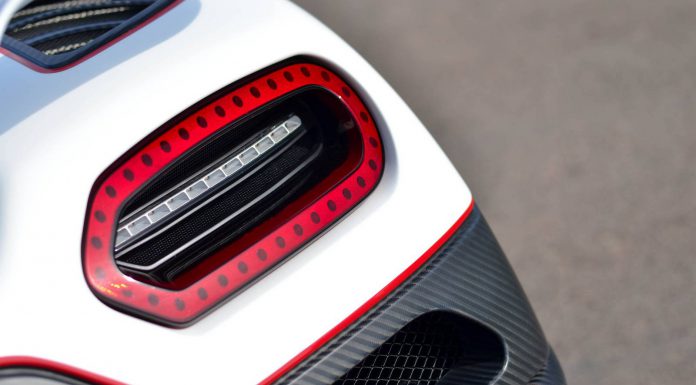
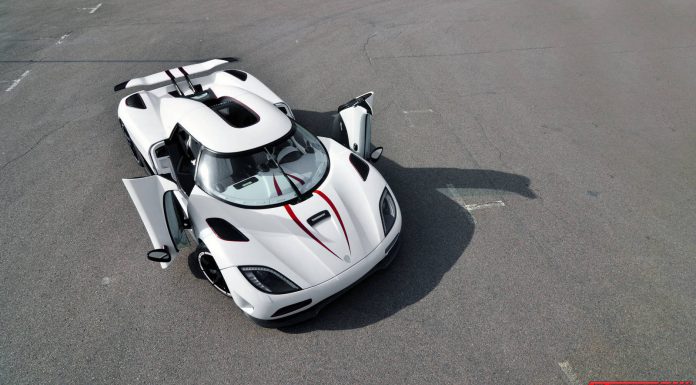















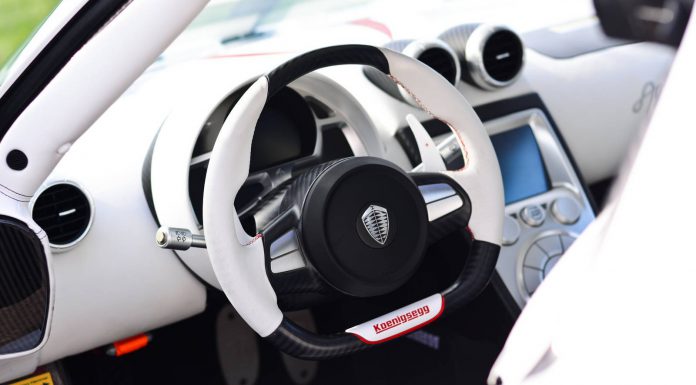
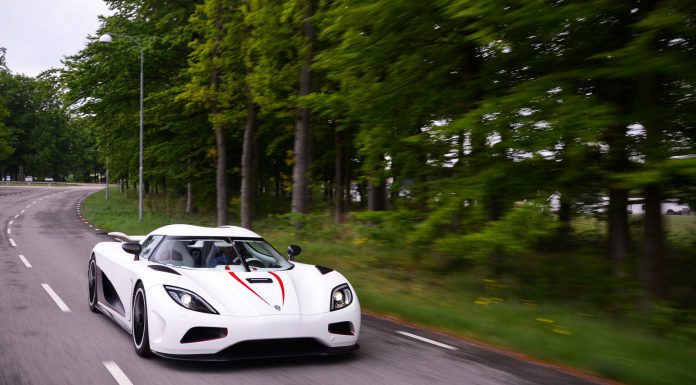
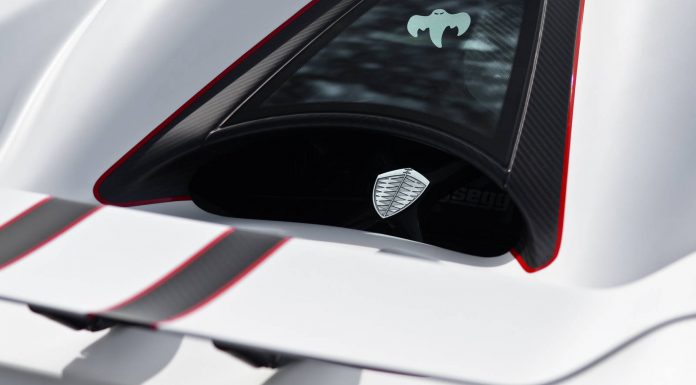
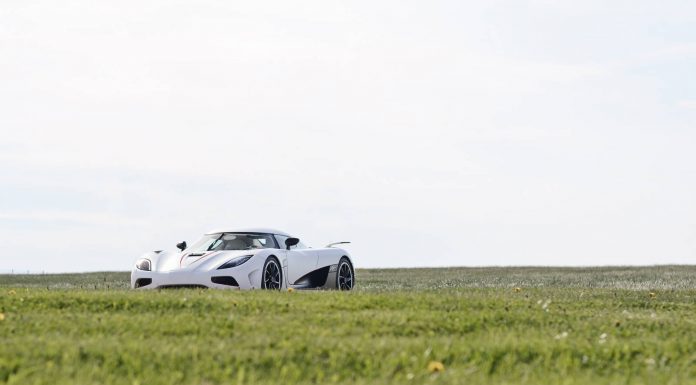
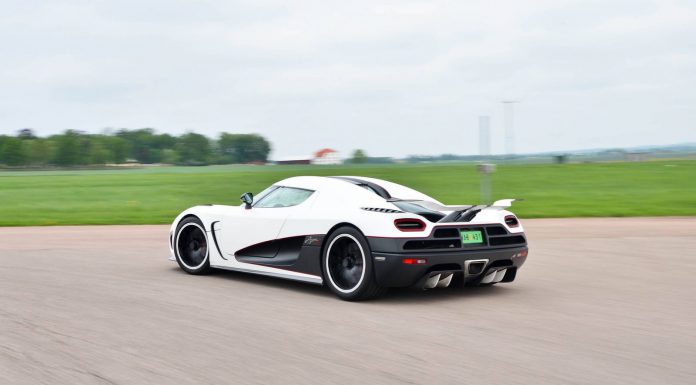
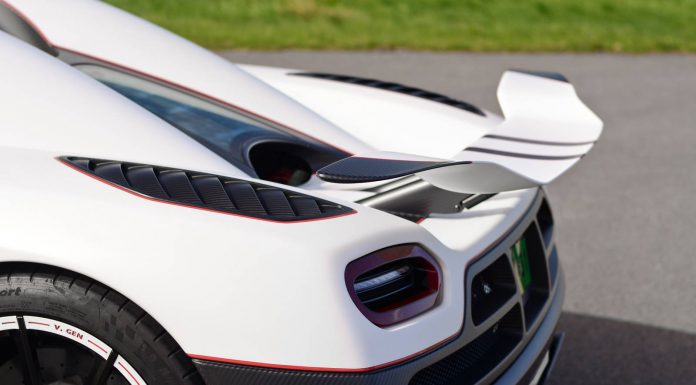















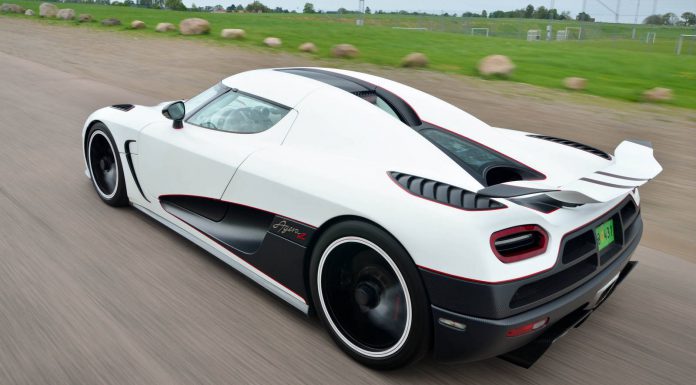











let me guess… another "test" without a clip?
Haha we saw it coming so the clip is being edited as we speak! We will let you know when its done ;)
you guys still working on the editing cause i havent seen the video anywhere yet.
Yes we are, we want to get some more high speed footage to spice up the video a bit and waiting for the opportunity to shoot it ;)
How about now, almost 5 years later? We know Christian is faking it, but who do the motor press let him get away with it, why do you sign such NDAs and then pretend you actually tested the car like you would a ferrari or lambo?
I am always in complete awe when I see this vehicle. Koenigsegg is one of the most amazing supercar companies ever. Thanks for the review and pictures!
Gitti Up!
Good cars "Koenigsegg Agera R".
The fact that this thing is handbuilt blows my mind every time!
oh my what a automobile, thanx plenty for the post,
I'm changing my name to Sven and moving to Sweeden!
Platz machen für den König (ge plats för kungen)… Koenigsheedy ;-)
vägen är klar sir.lol
I hope this new combustion engine technology that you have developed comes down to the mass production markets soon. As far as Bike engine is concerned, Please look at the Triumph Tiger 800XC and make a kickass engine for that first! Bring that logo to every Honda, Toyota, Mazda and other mass production brands in the world soon! Your stocks I wouldn't mind owning a piece of ;) Best wishes and keep doing what you do.
Romney? He sucks! Obama phone….
GTspirit.com It's taking a loooooooooooooooooooooong time.
Fake as usual, the article is 99% propaganda straight from Christians own mouth. Who would testdrive a supercar and write so little about the driving experience but instead go on and on about tedious design details? Christian really need to losen up the NDAs if he want to be a serious car manufacturer, the extreme control of information is simply disgusting. Only the worst possible quality and lack of refinement would need such secrecy.